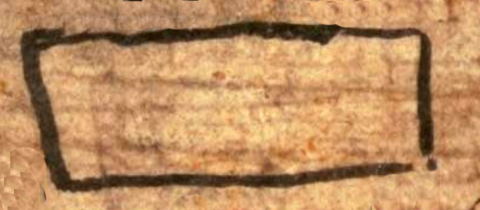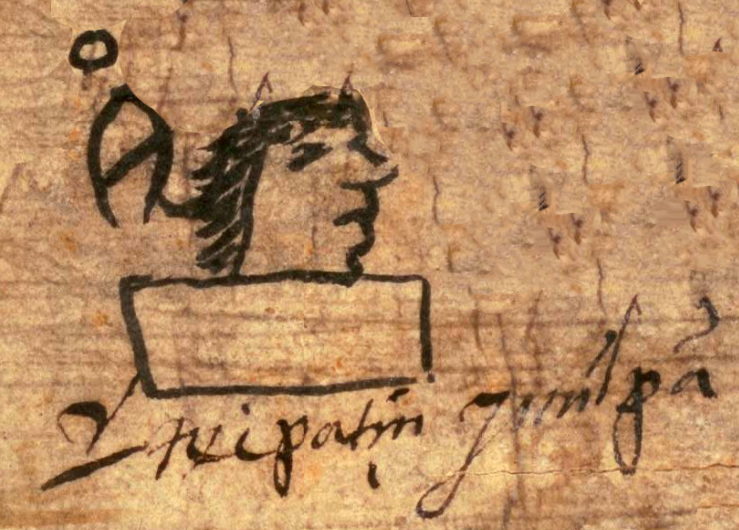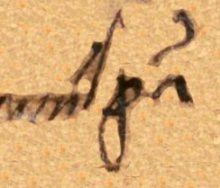milpa (CQ)
This black-line drawing of the simplex glyph for milpa (an agricultural parcel where corn was usually grown), from the Codex Quetzalecatzin, shows a horizontal rectangle with no particular sign of cultivation or measurement. The original image has a man's head connected to the rectangle; the gloss informs the viewer that his name was Ce Tecpatl, which is a calendrical name, 1-Flint.
Stephanie Wood
Milpa, as found in the gloss, is the form taken when the term milli entered into Spanish. The -pa suffix could mean toward or, if the final 'n" is inadvertently dropped, -pan (in or on) the agricultural parcel. Both Nahuas and Spaniards were possibly using milpa in certain contexts, and yet milli is prevalent in Nahuatl testaments well into the eighteenth-century. As examples from the Codex Mendoza show, earlier glyphs show markings (dots and u's) on the land that indicate cultivation.
Stephanie Wood
milpa
covers ruling men and women of Tecamachalco through 1593
Stephanie Wood
places, lugares, lands, tierras, agricultura, agriculture, parcels, parcelas, sementeras, nombres de lugares

mil(li), agricultural field, https://nahuatl.wired-humanities.org/content/milli
milpan, in the maize field, https://nahuatl.wired-humanities.org/content/milpan
la milpa
Randall Rodríguez
The Codex Quetzalecatzin, aka Mapa de Ecatepec-Huitziltepec, Codex Ehecatepec-Huitziltepec, or Charles Ratton Codex. Library of Congress. https://www.loc.gov/item/2017590521/
The Library of Congress, current custodian of this pictorial Mexican manuscript, hosts a digital version online. It is not copyright protected.






